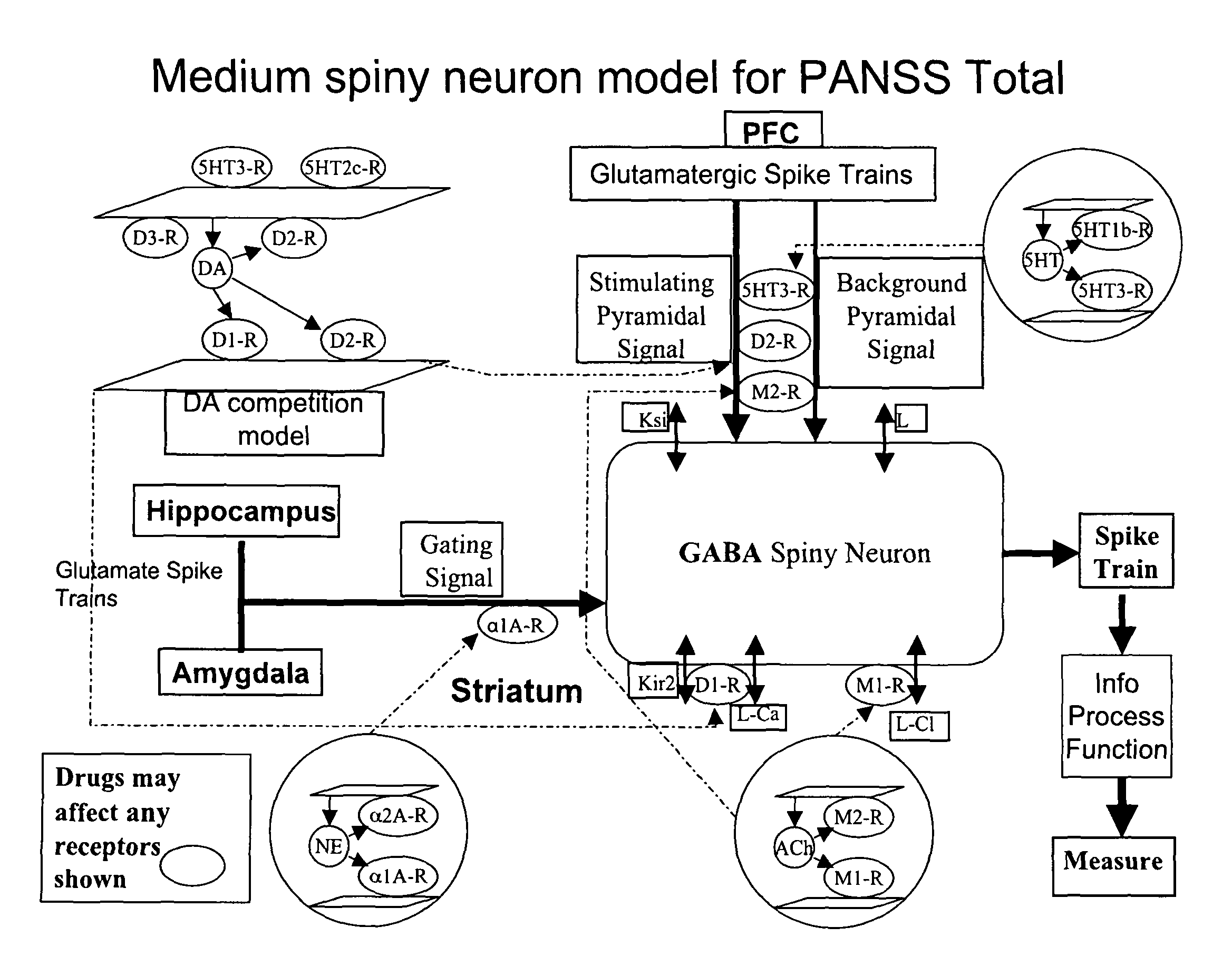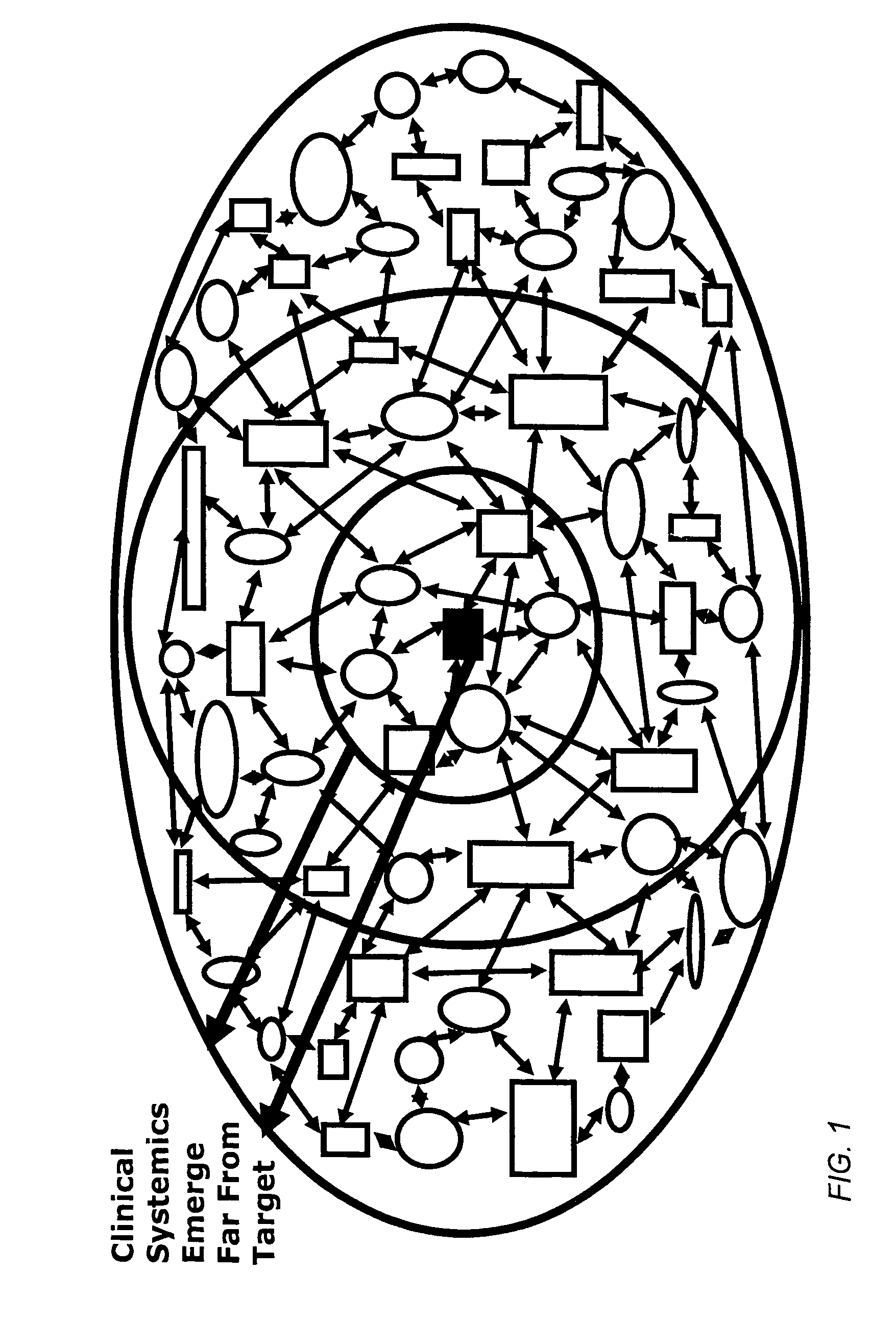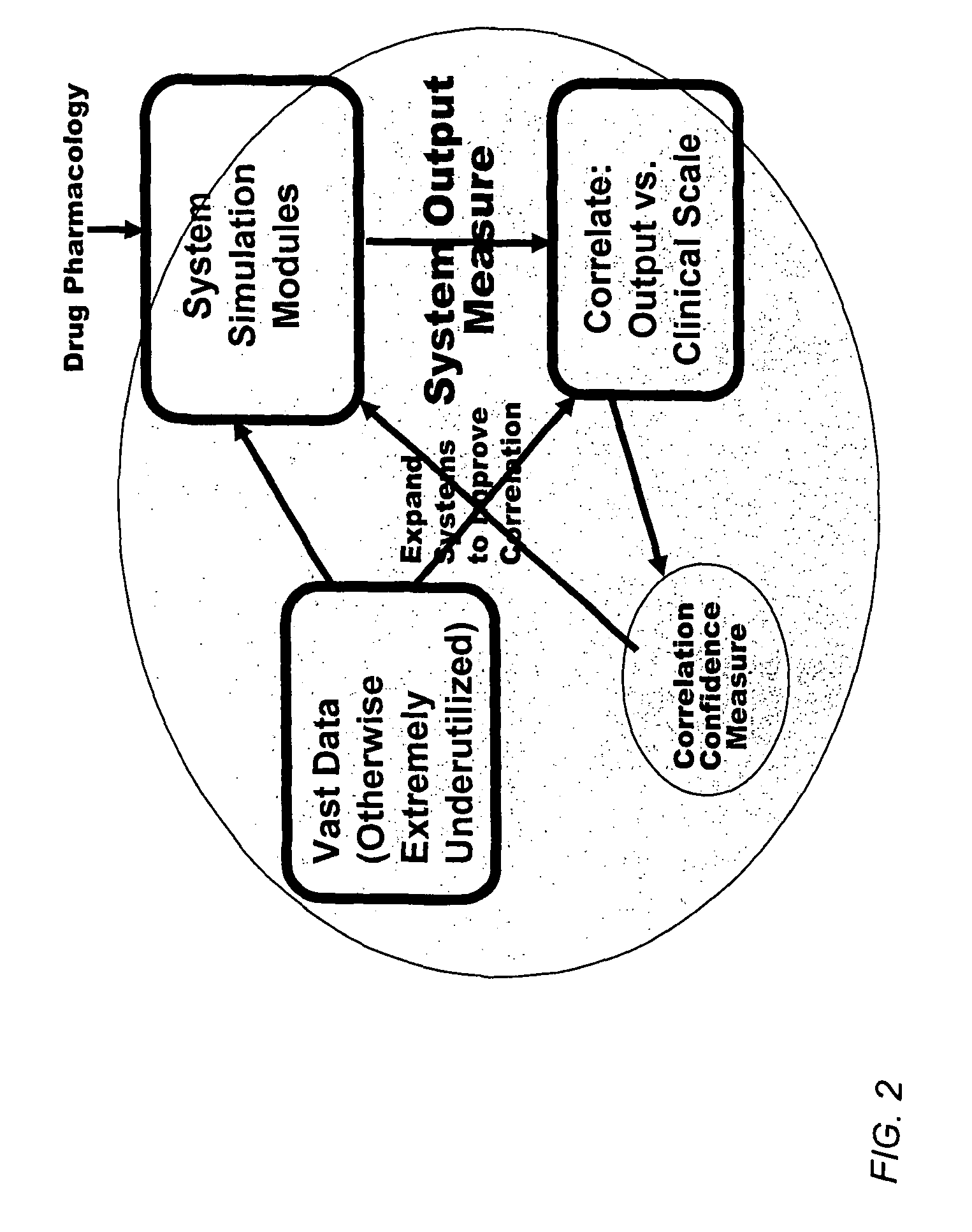Method and apparatus for computer modeling of the interaction between and among cortical and subcortical areas in the human brain for the purpose of predicting the effect of drugs in psychiatric and cognitive diseases
a technology of cortical and subcortical areas and computer modeling, which is applied in the direction of electric/magnetic computing, instruments, analogue processes for specific applications, etc., can solve the problems of not taking into account the actual dosage used in clinical setting, estimating the functional concentration of antipsychotic drugs in the brain, and not being able to identify drug targets. , to achieve the effect of improving the clinical outcome of trials, improving the set up of clinical trials, and improving the synchronization
- Summary
- Abstract
- Description
- Claims
- Application Information
AI Technical Summary
Benefits of technology
Problems solved by technology
Method used
Image
Examples
Embodiment Construction
[0059]The term “biological process” is used herein to mean an interaction or series of interactions between biological variables. Biological processes can include, for example, presynaptic autoreceptor regulation of neurotransmitter release; regulation of neurotransmitters bound to receptors; breakdown of the neurotransmitter; specific presynaptic firing patterns; appropriate facilitation and depression of presynaptic vesicle release. The term “biological process” can also include a process comprising of one or more therapeutic agents, for example the process of binding a therapeutic agent to a cellular receptor. Each biological variable of the biological process can be influenced, for example, by at least one other biological variable in the biological process by some biological mechanism, which need not be specified or even understood.
[0060]The term “biological variables” refers to the extra-cellular or intra-cellular constituents that make up a biological process. For example, th...
PUM
 Login to View More
Login to View More Abstract
Description
Claims
Application Information
 Login to View More
Login to View More - R&D
- Intellectual Property
- Life Sciences
- Materials
- Tech Scout
- Unparalleled Data Quality
- Higher Quality Content
- 60% Fewer Hallucinations
Browse by: Latest US Patents, China's latest patents, Technical Efficacy Thesaurus, Application Domain, Technology Topic, Popular Technical Reports.
© 2025 PatSnap. All rights reserved.Legal|Privacy policy|Modern Slavery Act Transparency Statement|Sitemap|About US| Contact US: help@patsnap.com



